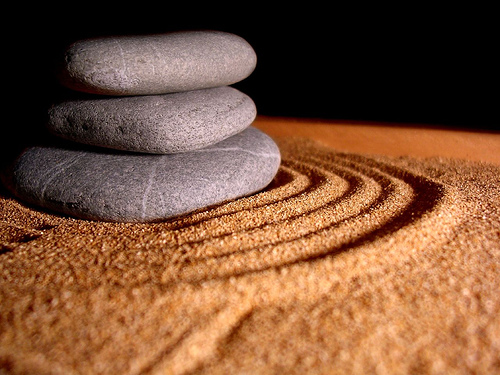Deb Burkman has been teaching yoga for 11 years and currently teaches at The Mindful Body yoga studio in San Francisco. She’s the person who first introduced me to the term “urban wellness” (she does an annual Urban Yoga and Wellness initiative in San Francisco). We got together to talk about what that means and how to find optimal health in an urban setting.
It’s easy to go on a retreat or a vacation and develop a sense of well being only to come right back into your hectic city life and lose it. The reality is that most people lead really busy lives. You have deadlines to meet, children to take care of, relationships to attend to, and constant interruptions on Facebook, your cellphone, and email. Urban Wellness is about having optimal health in an urban environment – trying to feel physically, mentally, and emotionally stable in a city.
Three ways to do that are:
1) Exercise more
Many people complain that they don’t have enough time to exercise, but exercising can actually help you optimize your time. By clearing your mind you’ll get more efficient at what you do and better able to manage your time.
Yoga is a great way to both bring exercise into your life and cultivate mental clarity. As a regular practice, it helps you refine your capacity to know yourself. It gives you a concentrated environment to directly experience everything that arises within you as you deal with the challenge of holding a posture and focusing your attention on your breath. You start to notice when you get frustrated with your instructor or when you push yourself too far or not far enough. You notice all the emotions that arise as a result.
Think about the last time someone cut you off in traffic and aggravated you. Did you take that negative state and carry it with you all day, projecting it on friends and family? Through yoga you start to be more aware of negative emotional responses and you can choose to observe them without reacting.
2) Eat whole foods
A whole food is as close to the way nature originally created it as possible. Generally you want to avoid packaged foods with ingredients that you don’t recognize. If you’re shopping on a budget then start by avoiding foods that are known to be particularly prone to pesticide residue, such as the “dirty dozen”: peaches, apples, sweet bell peppers, celery, nectarines, strawberries, cherries, pears, grapes, spinach, lettuce, potatoes.
3) Meditation
Meditation can be a little tricky because, unlike yoga, it can be much harder to see the benefits right away. It can take a while to understand that just sitting and being passive for a period each day cultivates a psychological strength to be with yourself and see yourself with more clarity. This state of calm helps you approach your day objectively, giving you a clear compass for what’s important to you and what isn’t.
If you’re new to meditation, a good place to start is to find a meditation group. In San Francisco, both the Zen Center and the Buddhist Center have introductory sessions. Of you can try the SF Insight website to join a meditation community. Alternatively find 10 – 15 minutes to just sit and focus on your breath. As your mind wanders, gently bring it back to your breath. You’ll find it does wonders for your sense of well being.
Deb’s classes are fun and playful. She teaches an Ashtanga Based Hatha Flow and tries to meet students where they’re at. Expect her to pay careful attention to your level of comfort. As you get more experienced, she’ll encourage you to try harder postures to advance your practice. You can find her at The Mindful Body. Also, check out her upcoming retreat at the Maya Talum Retreat in Mexico.






